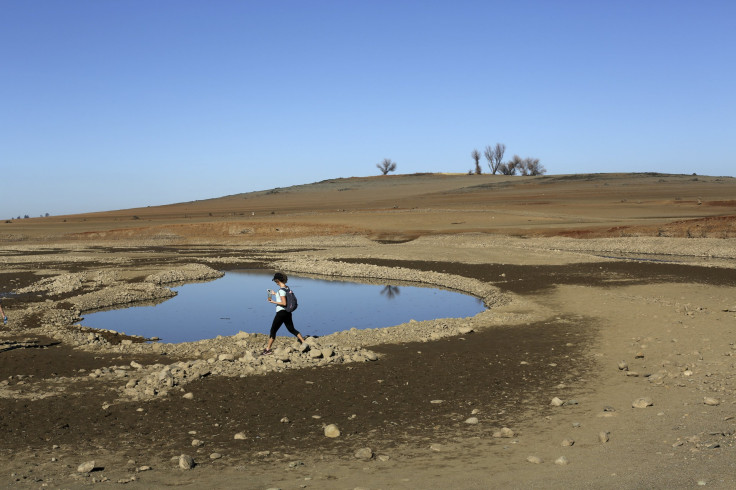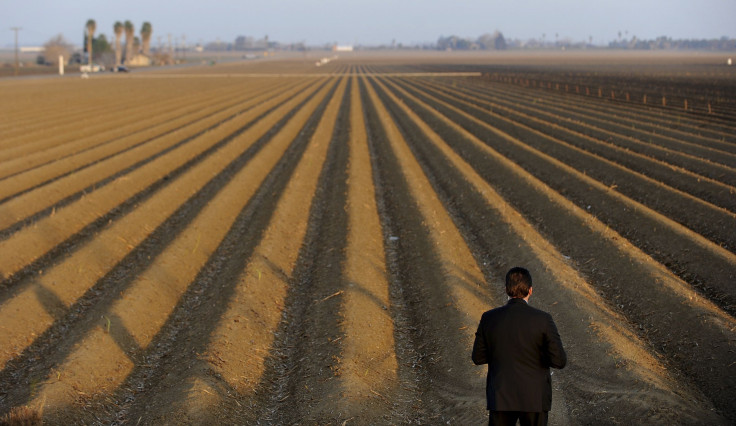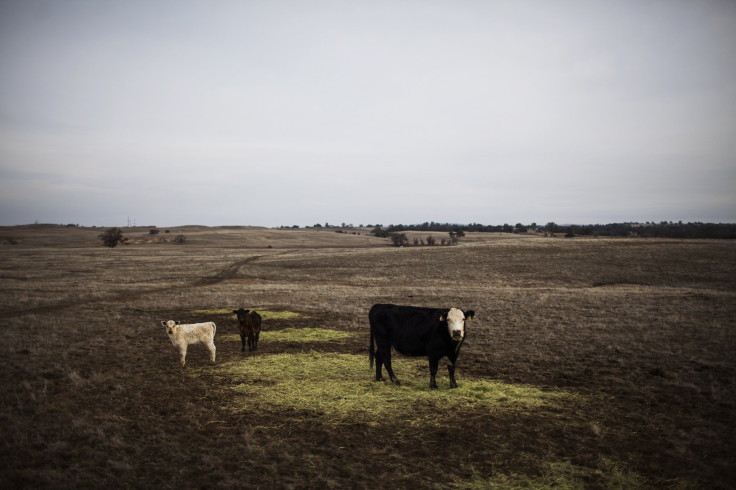California Drought 2014 A Result Of Global Warming? Extreme Dryness Made Worse By Climate Change [REPORT]

Parched soil, dangerous wildfires and severe water shortages have marked California’s record drought, and they were exacerbated by man-made climate change, according to a study published by the Bulletin of the American Meteorological Society Monday. The research pointing to abnormal atmospheric conditions over the Pacific Ocean as a cause of California’s ongoing drought provides fresh evidence of humans’ role in extreme weather events, including record-low rainfall and persistent heat in parts of the U.S.
The state is in its third consecutive year of unusually dry conditions, with 2013 topping the charts as the driest calendar year since National Weather Service recordkeeping began nearly 120 years ago. For the past few years, a vast ridge of high atmospheric pressure over the northeastern Pacific Ocean has blocked typical winter storms from reaching California. The effect is like a “large boulder in a small stream,” study co-author Daniel Swain, a doctoral candidate in environmental earth system science at Stanford University, told Reuters.
Researchers have dubbed it the Ridiculously Resilient Ridge. “One could call it the Region of Unusually Persistently High Geo-potential Heights Over the Northeastern Pacific Ocean, but I think Ridiculously Resilient Ridge is shorter,” Maine News quoted Swain as saying. One result of the so-called Triple R is California’s current drought, Swain indicated.

The new study was published as part of a series of reports on extreme-weather events in 2013, which collectively constitute one of the most comprehensive reports yet linking California’s drought and climate change. The high-pressure phenomenon over the Pacific has pushed rain as far north as the Arctic Circle and caused storms to bypass not only California but also Oregon and Washington.
The economic impacts of California’s ongoing drought have been sorely felt throughout the state, costing billions in lost farm revenue and thousands of jobs, economists found this year. Researchers have said California is expected to lose $2.2 billion in 2014 as a direct result of the drought. More than 17,000 seasonal jobs in the Central and San Joaquin valleys, the center of California’s agricultural production, have been lost.

In the face of severe water losses, increased groundwater pumping and low snowpack in the Sierra Nevada Mountains, the state’s water control board mandated water restrictions in urban areas and for some customers in the agriculture sector. Wildfires have gotten worse because of increased dryness in wildfire-prone regions, as chronicled by the Los Angeles Times and other media outlets. Even the very geography of California has changed -- a net loss of 63 trillion gallons of groundwater has caused the ground underneath the Sierra Nevada range to rebound, literally moving mountains by as much as 0.6 inches (15 millimeters), Scientific American said.
However, researchers stopped short of saying California’s extreme drought was directly linked to human-induced climate change. “There is so much variability in rainfall,” Thomas C. Peterson, principal scientist at National Oceanic and Atmospheric Administration’s National Climatic Data Center and one of the report’s editors, told Reuters. “Finding a signal and attributing how much of the signal is climate change is difficult.”

The new research follows a study published last week that found warming in the Pacific Northwest was linked to changing wind patterns in the region, rather than human activity. That study suggests, over the past century, winds there have weakened and shifted direction, leading to increases in ocean surface temperatures that have affected overall temperatures in the Northwest. But whether the changing winds themselves were the result of human-induced global warming was not addressed.
© Copyright IBTimes 2025. All rights reserved.






















